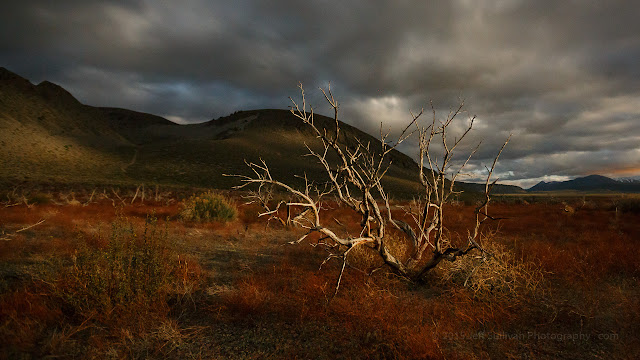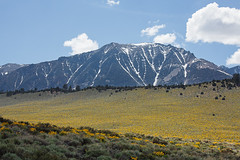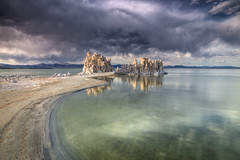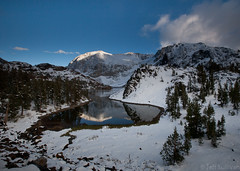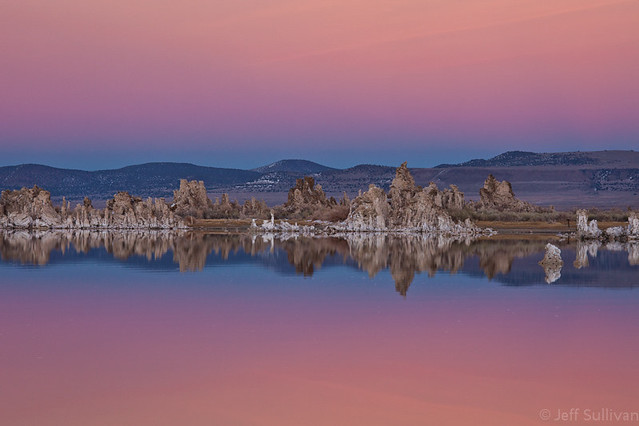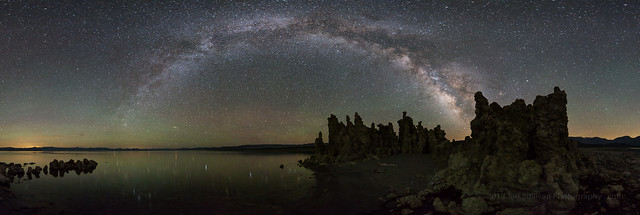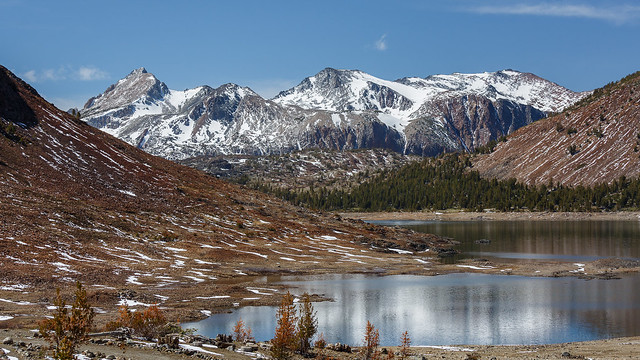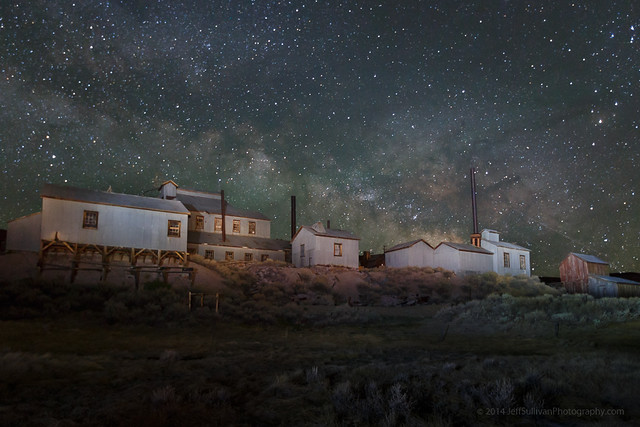 |
| A happy Valentine's Day: February 14, 2017, Yosemite National Park |
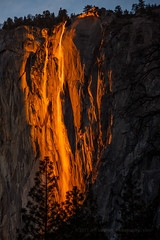 |
| Two flows in 2016! |
Horsetail Fall in Yosemite Valley is backlit by the setting sun for roughly two weeks each year. As the sun falls behind the vertical face of El Capitan, it selectively lights this waterfall with its orange sunset glow.
This is an amazing spectacle to witness. Lasting only about 15 minutes before the sun goes down, the lighting gradually grows in intensity and color for the last 5 minutes or so. It is often like seeing a narrow strip of lava flowing down the face of El Capitan.
The weather and the water flows often don't cooperate. You need enough snow above El Capitan, high enough temperatures up there for some of that snow to melt, and you need clear skies where the sun sets on the western horizon. I was shut out by back to back blizzards in 2007, so I was fortunate to see this on two consecutive evenings from two different angles in 2008, and several times since then.
 |
| Nearly no water in 2012, it still looked great! |
Sometimes there is little water flowing down the rock, but from a position to the south, the selective light on the wet spot makes it look like the waterfall is there anyway!
Other times, if there's clearly too much cloud cover or valley mist to allow light through, heading somewhere else for a more traditional landscape shot may be the ticket for that evening. You have to first anticipate where the best light will be, before you can be in the right place to react to the light as it develops.

In 2017 I experienced a new variation: there was little direct light on the waterfall at sunrise, but there was intense sunset color on the horizon a few minutes later, and while the main flow of water didn't pick that up with any particular intensity, the surrounding wet spots on the rock reflected it beautifully.
Unfortunately most photographers seemed to have been waiting only for the direct light of the sun, so there was a pulse of traffic as they drove away, probably not seeing the sunset light that developed after the official sunset time. Folks,
that's how sunsets usually work! The best color is minutes AFTER the theoretical (zero degree horizon) sunset time. So stick around for at least 10 minutes "after sunset", or even 15 or 20, just to be sure that you don't miss that night's color, whatever it may be.
 |
| February 28, 2008 |
1) Along the bank of the Merced River near the turnout just East of the Cathedral Beach picnic area (which is closed for Winter). This location is described on page 24 of my 320-page guidebook
"Photographing California Vol. 2 - South".
This angle provides the composition that compresses the complete length of Horsetail Fall against the rock of El Capitan. You can zoom in for a composition with no sky, or use a wider focal length to include the profile of El Capitan. This seems to be the most crowded location in recent years, as photographers pack together to shoot through an opening in the trees.
This is arguably a more complete view of Horsetail Fall, showing a longer stretch of its descent, making it look longer and skinnier. The view of more of the vertical drop makes the water flow look skinnier, and seeing it all from a longer distance makes it look more abstract and lava-like.
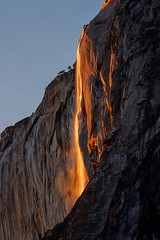
2) In the vicinity of the Cathedral picnic area on Northside Road in the valley, 1/2 mile East of the El Capitan bridge. That North road is closed for maintenance, so it's a 1 mile walk each way from where the El Captan bridge road hits Southside Road. This location is also described in
"Photographing California Vol. 2 - South".
This is more of a side view than the position on the south side of the Merced River, with the upper reaches of the waterfall against the sky. By showing less of the vertical drop, the flow of the water looks wider, and you see more of the rock face relief in detail.
The more northern location is probably the more common and iconic shot you see, although I don't mean to imply that's better. It's just another nice variation on a rare and amazing solar alignment event.
 |
| No Horsetail, 2007. So what? |
The conditions required to make Horsetail Fall are unpredictable, so it's important not to rule out all trips that look iffy. You're probably more likely to miss it than catch it, but it's important to remember that Yosemite is beautiful this time of year, and generally more so if there are passing storms! So missing Horsetail Fall may be the best possible outcome for your trip. You may catch far better photos, of far more unique conditions.
Plan on some dates, prepare yourself for the trip (carry chains), enjoy a winter trip to Yosemite, and consider Horsetail Fall to be possible icing on the cake! And expect to enjoy return trips to Yosemite in the winter if you don't get the Horsetail Fall photo that you want on the first one. Seriously, even when I lived in Sacramento, only 3 hours away, it was nearly impossible to predict when conditions would be great.
Life isn't a destination, it's the journey that occurs as you pursue your goals. Enjoy and make the most out of every moment.
If you want a little help maximizing your odds of success and anticipating the light to be in the right place while you are in the park, I update my annual list of Yosemite photography workshops
here.
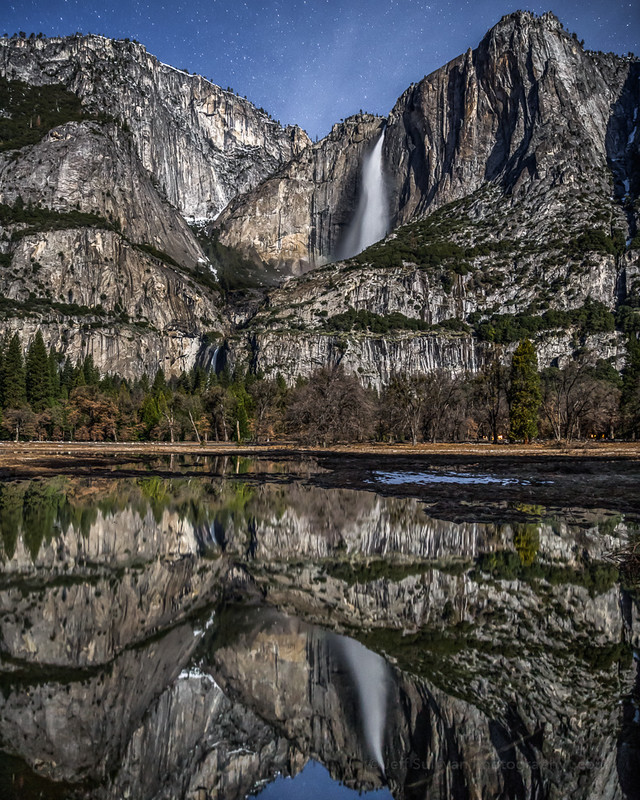 |
| Upper Yosemite Falls reflection on a moonlit night, February 15, 2017 |


























